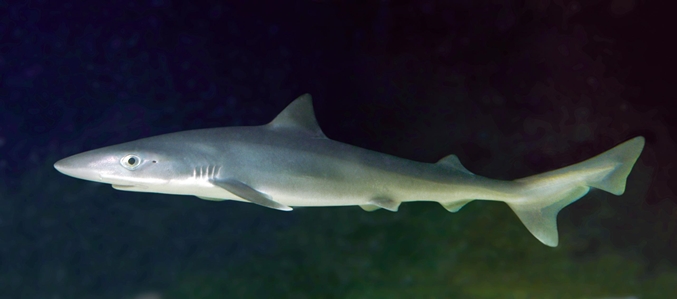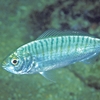General Description
Body slender, streamlined, with two widely-spaced dorsal fins, the first much larger than the second. Tail with a long, broad, distinctly-notched upper lobe. Teeth with coarsely serrated outer margins. Uniformly slate grey to bronze above, paler below. To 2 m.
Biology
These free swimming sharks are ovoviviparous, meaning that the young are born shortly after hatching from eggs that develop inside the mother's uterus. Juveniles are occasionally found in coastal bays and estuaries, whereas adult School Sharks rarely enter bays. The School Shark is the most important commercial species in the southern Australian flake fishery. It is migratory and can live to more than 40 years. Although harmless, the sharp teeth could cause a nasty wound.
Habitat
In bays, along the coast and in offshore waters, to a depth of 500 m.
Open water
Distribution guide
Southern Australia.
Species Group
Depth
Shallow (1-30 m)
Deep ( > 30 m)
Water Column
Max Size
2 m
Diet
Carnivore
Harmful
Although considered harmless to humans, has the potential to bite.
Commercial Species
Yes
Global Dispersal
Native to Australia
Conservation Status
- DSE Advisory List : Not listed
- EPBC Act 1999 : Conservation Dependent
- IUCN Red List : Vulnerable





